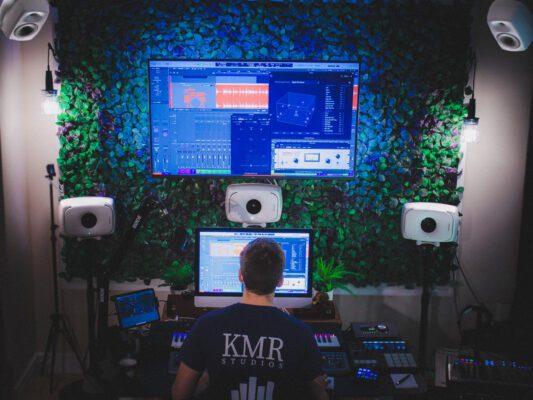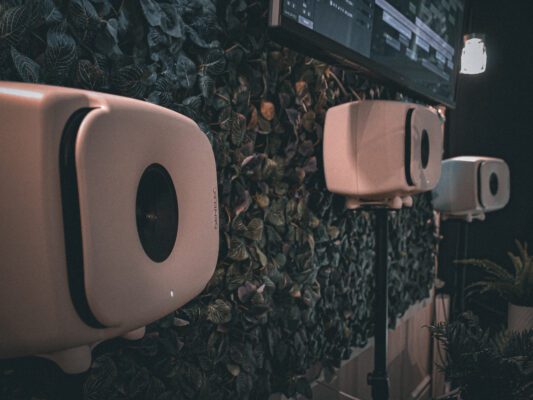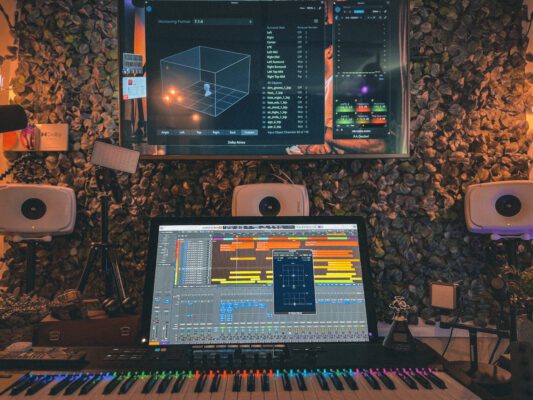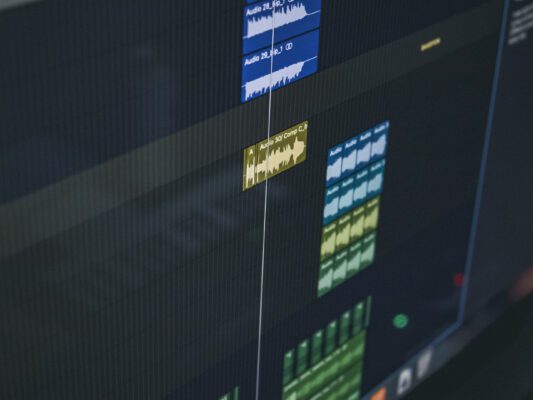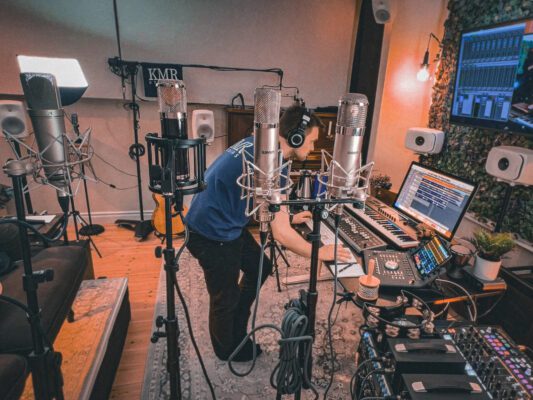Surround formats are becoming more and more common every year. There are different ways of presenting sound in the audio format and since the 1970s Ambisonic is a well-used one. This article will tell you more about what Ambisonic is for and what advantages and disadvantages the format has.
What is Ambisonic and what are its uses?
Ambisonic is a sound recording and playback technology that aims to create a more immersive and realistic sound experience. The technology is commonly used in areas such as virtual reality (VR), 360-degree video and audio production.
In traditional stereo sound recording, two microphones are used to capture audio as coming from two different directions. This audio is then reproduced through two speakers. Ambisonic, on the other hand, takes it a step further by using multiple microphones to capture sound from all directions in a 3D environment.
Ambisonic technology uses a spherical microphone array, typically with four microphones placed in a tetrahedron configuration. These microphones capture the sound from all directions, including height. The information is then stored in multiple channels.
To reproduce the sound, a special decoding technique is used. This technique takes into account both the direction of the sound and its intensity, in different directions. By using multiple speakers, the ambisonic system can recreate a sense of the sound’s original location. This gives the listener a more realistic and immersive experience.
As previously mentioned, the technology is often used in VR and 360-degree video to create an audio environment that corresponds with the visual experience. However, it is also used in audio production to create surround sound for movies, games and music. By using ambisonic technology, audio engineers can create a more dynamic and realistic sound environment that enhances the user’s experience.
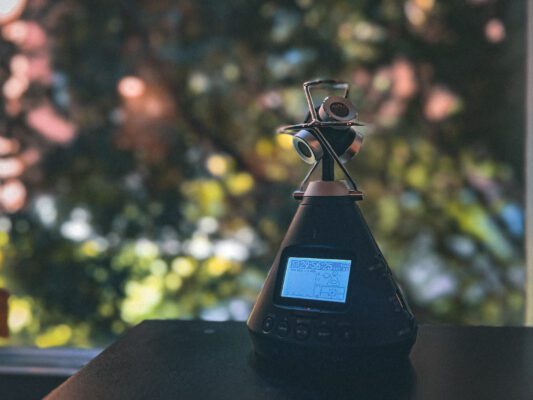
“Soundfield”-mikrofon som används för Ambisonic-formatet.
How does Ambisonic technology work?
Here comes a more technical overview of the workflow from recording to playback with ambisonic technology.
-
Recording:
- Ambisonic recording involves the use of a spherical microphone array with four microphones placed in a tetrahedron configuration.
- The microphones capture the sound from all directions in a 3D environment, including height.
- Each microphone captures the sound as a separate channel and stores the information about the intensity and direction of the sound.
-
Coefficient calculation:
- After recording, the captured audio signals are converted into ambisonic coefficients.
- The Ambisonic coefficients represent the intensity and direction of the sound in different directions and orders (e.g. first order, second order).
- The coefficient calculation uses techniques such as amplitude panning and phase adjustment.
-
Coding:
- The Ambisonic coefficients are encoded to store and transmit them efficiently.
- Various encoding formats exist, including first-order (FOA) and second-order (SOA) formats.
- The coding involves combining and manipulating the coefficients to represent the direction and intensity of the sound relative to the listener’s position.
-
Decoding and playback:
- To reproduce the ambisonic sound, a decoding technique is used to convert the coded coefficients into audio signals for each speaker in the speaker system.
- The decoding technology takes into account the direction and intensity of the sound in different directions to recreate the sound’s original location and room acoustics.
- The decoding can be performed with methods such as spherical harmonic decomposition (SHD) or virtual microphone rendering (VMR).
- The array of speakers can vary depending on the system, but typically a spherical array of speakers is used to reproduce the spherical sound field in a 3D environment.
Thus, ambisonic technology can provide a more realistic sound experience. This is done by capturing and reproducing the sound from all directions in a 3D environment. It provides a sense of presence and room perception that improves the experience of the sound image for the listener.
Advantages and disadvantages of the Ambisonic format
Advantages:
- Immersive sound experience: Ambisonic technology offers a more immersive and realistic sound experience by capturing the sound from all directions and recreating it in multiple channels. Ambisonic can recreate the feeling of the sound’s original location and room acoustics, providing a more natural and immersive sound environment.
- Flexibility: Because the audio is recorded and stored in multiple channels, it can be decoded and adapted for different speaker setups and sound systems. With the microphone Zoom H3-VR you can record and then easily convert recording to different formats to be able to work further with the recording. Everything from headphones to 5.1, with the push of a button!
- Compatibility: Ambisonic technology is compatible with various platforms and areas of use. This includes virtual reality (VR), 360-degree video and audio production.
Disadvantages:
- Special equipment: To use the technology, you need a spherical microphone array and a decoding process. This is needed to reproduce the sound correctly. It may require special equipment and software.
- Complexity: Ambisonic technology involves a certain learning curve and technical complexity to properly master the recording and decoding processes.
- File size and processing requirements: Because the audio is recorded and stored in multiple channels, ambisonic files can be larger than traditional audio files. This can require more storage space and processing power.
KMR Studios
At KMR Studios we work in the immersive format Dolby Atmos! We produce, mix and master in this format. If you have questions or want to work with us, don’t hesitate to contact us! We use a Zoom H3-VR when recording environmental sounds that we used in both stereo and Dolby Atmos projects.
Read more articles in music production and sound technology
Export master files from Atmos projects in Logic Pro
This article gives you detailed information on how to export master files from Logic Pro [...]
Mixing in Dolby Atmos: Workflow from start to finish
Do you want to work with Atmos in Logic? Curious about how to efficiently work [...]
What is a good tube microphone?
Read about the extensive test of various tube microphones we conducted in collaboration with Uppsala [...]

CONTACT US
OUR PORTFOLIO
Over the past few years, KMR Studios has released hundreds of songs by a wide range of artists. To make it easier for you to find what you’re looking for, we’ve organized the music into various playlists. Click the link below to explore our music by format (stereo or Dolby Atmos) or genre.
Portfolio
 Svenska
Svenska
